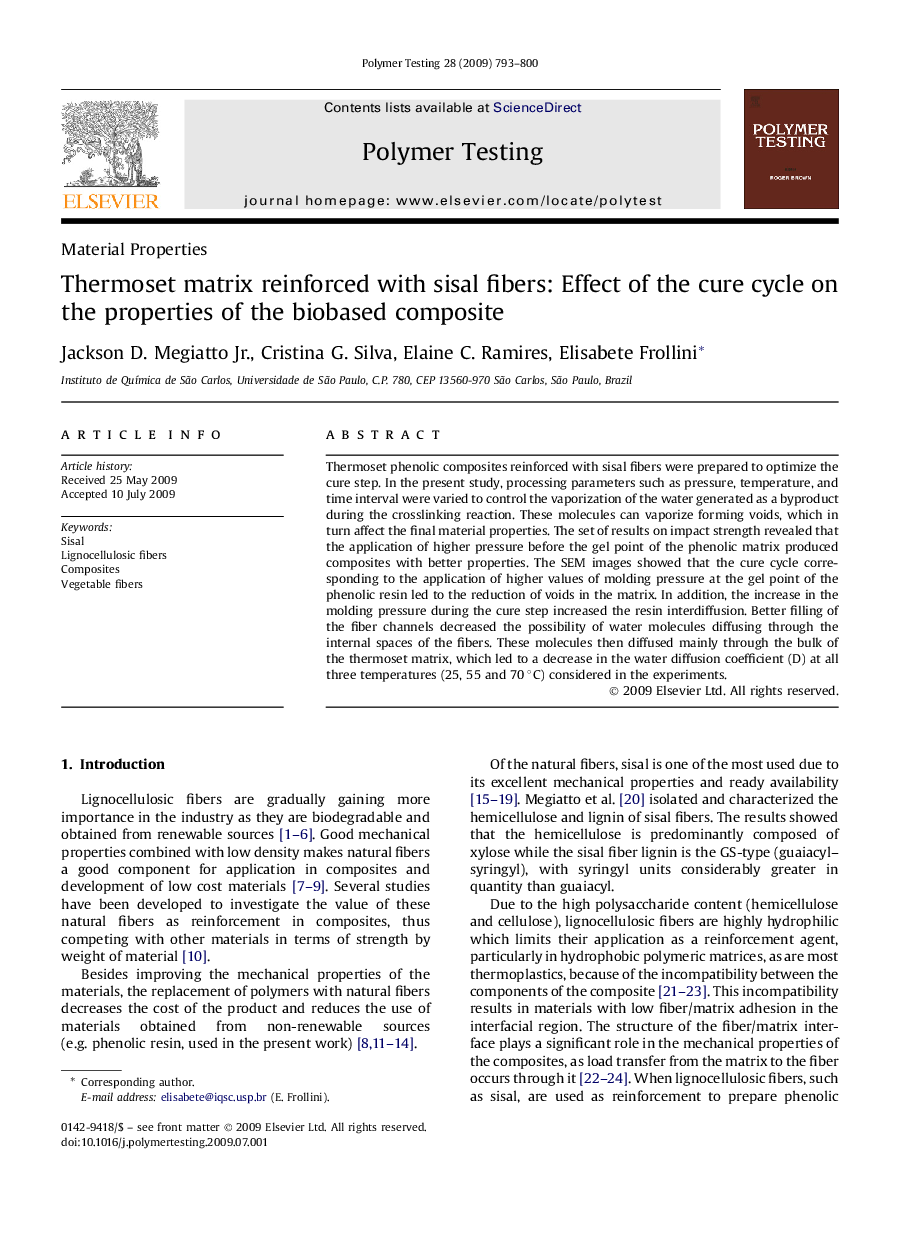| Article ID | Journal | Published Year | Pages | File Type |
|---|---|---|---|---|
| 5207206 | Polymer Testing | 2009 | 8 Pages |
Thermoset phenolic composites reinforced with sisal fibers were prepared to optimize the cure step. In the present study, processing parameters such as pressure, temperature, and time interval were varied to control the vaporization of the water generated as a byproduct during the crosslinking reaction. These molecules can vaporize forming voids, which in turn affect the final material properties. The set of results on impact strength revealed that the application of higher pressure before the gel point of the phenolic matrix produced composites with better properties. The SEM images showed that the cure cycle corresponding to the application of higher values of molding pressure at the gel point of the phenolic resin led to the reduction of voids in the matrix. In addition, the increase in the molding pressure during the cure step increased the resin interdiffusion. Better filling of the fiber channels decreased the possibility of water molecules diffusing through the internal spaces of the fibers. These molecules then diffused mainly through the bulk of the thermoset matrix, which led to a decrease in the water diffusion coefficient (D) at all three temperatures (25, 55 and 70 °C) considered in the experiments.
